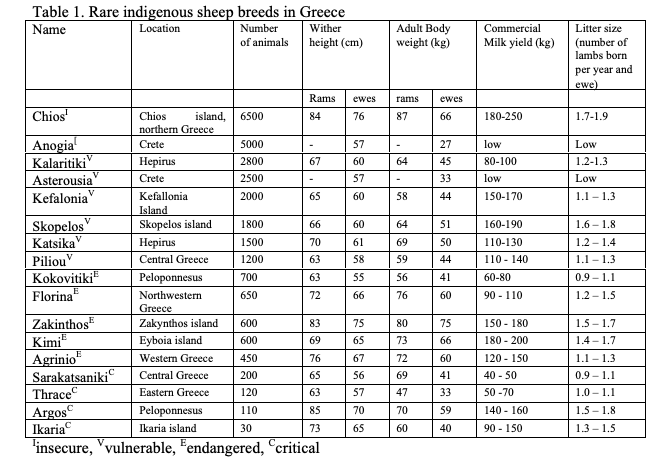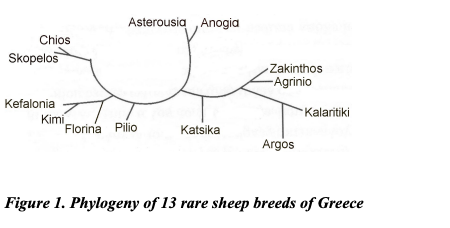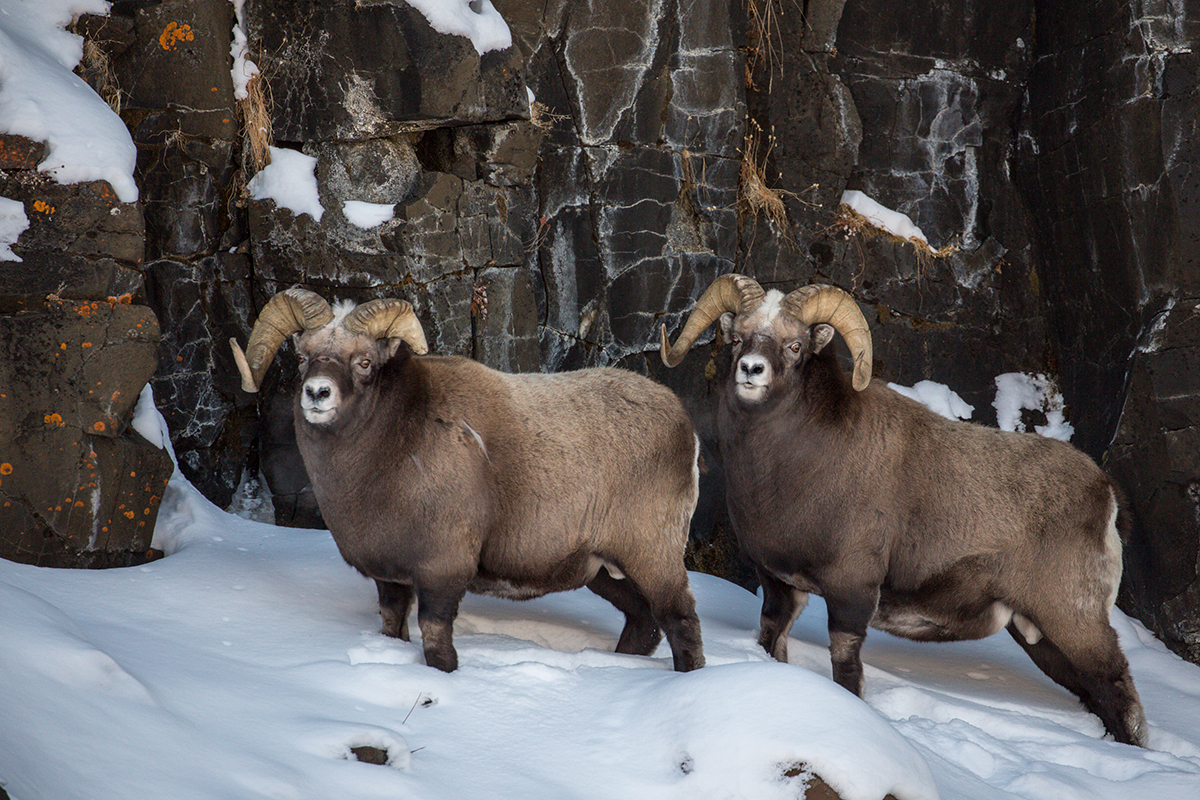
The above sheep breeds are distributed all over the country and in a wide range of ecological and geographical conditions. They are generally characterized by high adaptability under harsh environmental conditions, high survival ability under restricted feed and water supply and disease resistance. Some of the breeds display unique phenotypic characteristics such as the wool type of Asterousia, the earless in Piliou, the high body size in Zakynthos and the tail shape of the Argos breed. In terms of (re)production, some breeds i.e. Skopelos, Chios, Zakinthos, Kimi and Argos have high or relatively high milk yield while Chios, Skopelos, Kimi and Argos are considered prolific breeds (Table 1). Some other less productive breeds are associated with the ecosystem in which are kept (Asterousia, Katsika) or are of great historical value (Kalaritiki) and cultural importance (Sarakatsaniko). Results of genetic protein polymorphism analysis showed that some breeds are closer related than others, forming clusters, e.g. Asterousia and Anogia in Creta, Zakinthos and Agrinio in the Western part of Greece and Chios and Skopelos, probably due to common origin (Figure 1). Breeds of Crete (Asterousia and Anogia) are differentiated from Other islands (Chios, Skopelos, Kimi, Kefalonia) and continental breeds (Florina, Katsika, Kalaritiki). Furthermore, there were three major clusters of breeds formed, each one located in the western, eastern and southern part of the country, respectively (when breeds Kefalonia and Florina are not taken into account).

In most cases, the status of the sheep breeds is either critical (Ikaria, Argos, Thrace, Sarakatsaniki) or endangered (Agrinio, Kimi, Zakinthos, Florina, Kokovitiki) implying that intervening actions for ex situ (Ikaria, Argos and Thrace breeds) or in situ conservation (for the endangered breeds) programs should be directly undertaken. In the case of in situ conservation, actions should include collection and freezing of semen, ova, embryos and DNA segments and/or keeping captive breeding animals in zoos or institutions. In the case of in situ conservation programs, measures should aim at ensuring an adequate effective population size (around 500) to minimize loss of genetic variation due to genetic drift and maintain constant genetic variance (Franklin, 1980). Conservation of the sheep genetic diversity is a composite objective because it aims at maintenance of the diversity of both within and between breeds i.e. prevention of breed extinction. It should be very clear, however, that prevention of breed extinction and management of within breed genetic variation are related but different objectives. In any case, maintenance of genetic diversity is only one aspect, economic viability, cultural values and ecological and socio-economic functions are of similar importance. Decision support tools which integrate all relevant aspects still need to be developed.
Source :
Kominakis, A. and E. Rogdakis
Department of Animal Breeding & Husbandry, Agricultural University of Athens (AUA)
